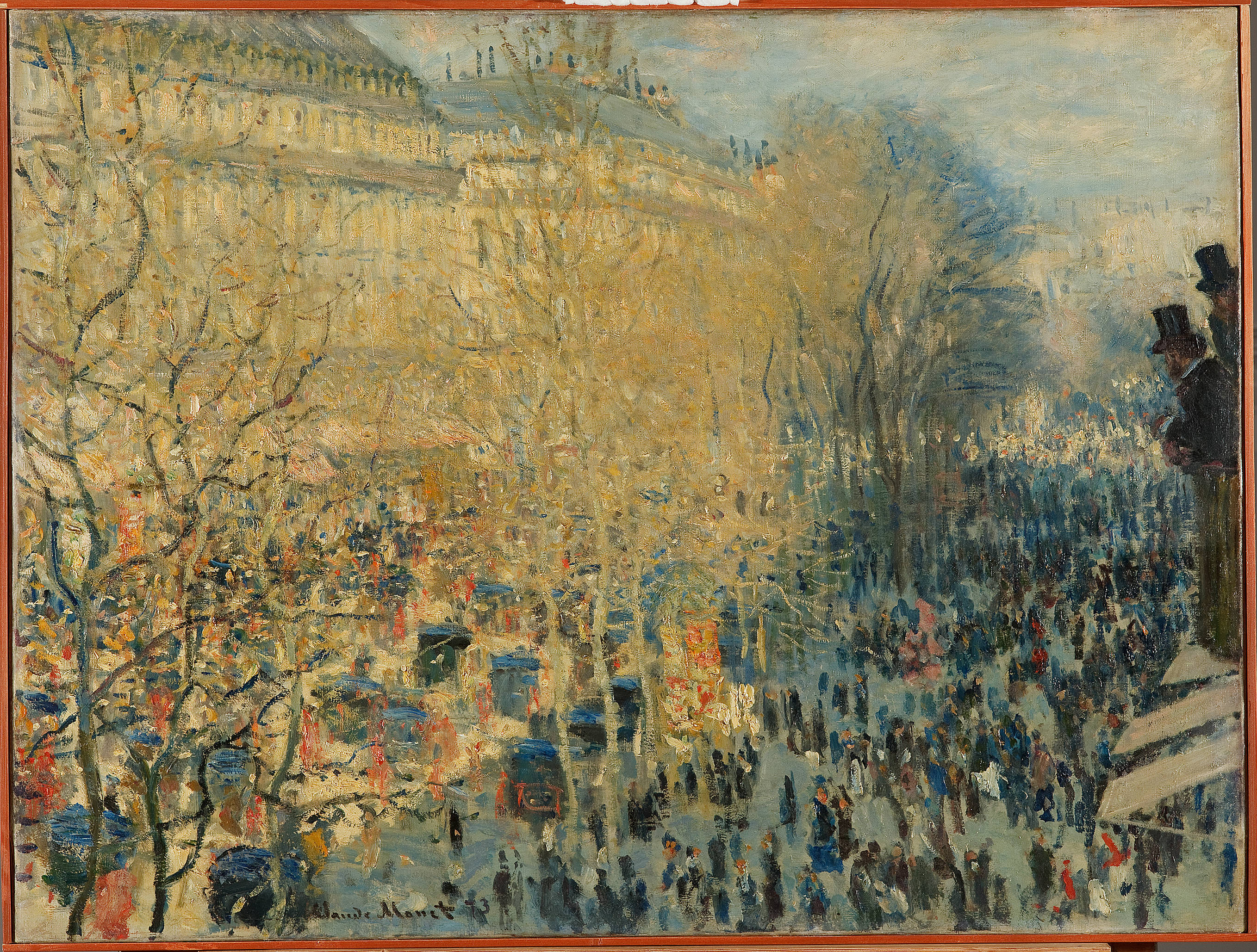
UK-Russian relations have gone from bad to toxic after the poisoning of a former Russian spy and his daughter in an English cathedral city. But the National Gallery’s new show “Monet and Architecture” offers a ray of light. The exhibition includes a Monet painting from Moscow among the 70 works that depict Paris street scenes, the Houses of Parliament, Doge’s Palace, and fashionable beachfront hotels at Trouville.
Claude Monet, The Beach at Trouville (1870), private collection, Milan.
The Pushkin State Museum of Fine Arts has lent The Boulevard des Capucines, Paris, an early work from 1873, which Claude Monet showed in the first-ever Impressionist exhibition the following year. The painting arrived about a week ago, the exhibition’s curator, Richard Thomson, tells artnet News, to his relief.
A spokesman for the National Gallery says it is delighted that colleagues at the Pushkin Museum have lent the work, “which goes to demonstrate that culture transcends all boundaries.”
Thomson is no stranger to nail-biting loans arrivals. The professor of fine art at the University of Edinburgh has curated or co-curated a dozen exhibitions over the past three decades, which have been seen by an estimated 5 million people. It was while working on the Grand Palais blockbuster “Monet, 1840-1926” in 2010 that he came up with the idea of looking at the artist’s relationship with architecture. “It’s a way into Monet that hasn’t been done before,” he says of the artist, best known for painting his garden at Giverny and haystacks in the fields nearby.
Claude Monet, The Saint-Lazare Railway Station (1877), courtesy of the National Gallery, London.
Famous urban works are included, such as the National Gallery’s The Saint-Lazare Railway Station (1877), as well as views of bridges over the Thames at Waterloo and Charing Cross. The exhibition ends with five paintings of Rouen Cathedral, and works that the artist painted in Venice just before the outbreak of World War I.
Claude Monet, Rouen Cathedral. The Portal and the Tour d’Albane at Dawn
(1893-94). Courtesy of the Museum of Fine Arts, Boston.
During the Great War, the 76-year-old Monet “jumped at the chance” when officially asked to paint the cathedral of Reims—or what was left of it after three years of bombardment by the German army.
“Like a good, patriotic Frenchman,” he was eager to accept the commission, Thomson says. But daily artillery attacks made it an impossible commission. Instead he painted his last great work, a cycle of monumental paintings of the water lilies at Giverny, which became a modern war memorial at the purpose-built Musée de l’Orangerie in Paris.
“Credit Suisse: Monet and Architecture,” the National Gallery, London, from April 9 to July 29.